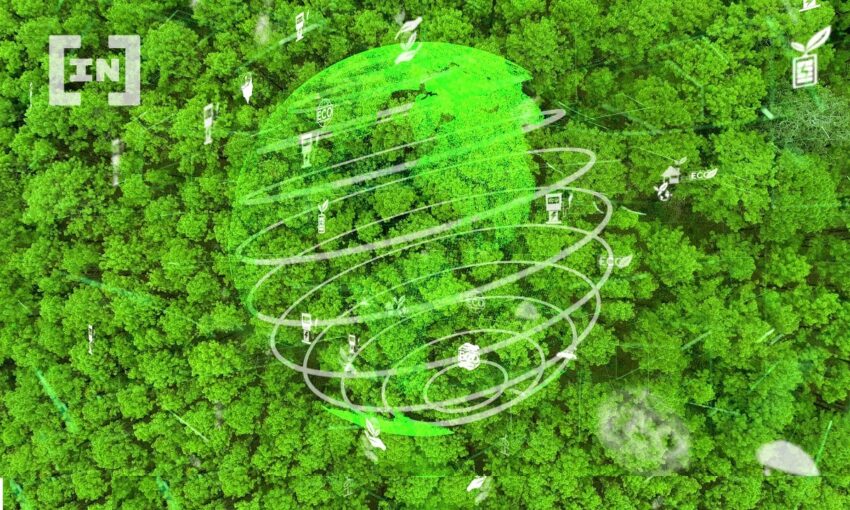
2022-6-21 04:37 |
Carbon credits for farmers can help uninsured farmers to get good climate coverage says Jan Stockhausen, Chief Legal Architect at Etherisc
Climate change is intensifying global weather disasters, and while this is affecting everyone, these volatile conditions impact some people much more than others.
Between 2010 and 2020, 15 times more people died from floods, droughts and storms in the world’s most vulnerable regions than in other parts of the world. These areas included parts of Africa, South Asia and Central and South America.
One group that is particularly vulnerable to environmental havoc is smallholder farmers. For these farmers, a single, prolonged drought is enough to kill an entire crop and thrust a small farm into cyclical debt and financial instability.
The twin forces of climate change and poverty create a trap for this community. Ironically, the agriculture industry is one of the largest global CO2 contributors, and many agricultural practices, like those used in rice farming, emit large quantities of methane.
One solution that could address this two-sided problem is an incentive system that rewards smallholder farmers for adopting climate-friendly practices with carbon credits. The carbon credits could then be leveraged to pay for climate insurance premiums, creating a cycle of risk mitigation for vulnerable farmers, while encouraging sustainable agriculture practices.
As our climate continues to deteriorate, adopting such solutions will become increasingly essential for protecting the livelihoods of billions globally.
Insurance accessibility issuesInsurance is a tool that mitigates risk, but as of now, it is a tool of the wealthy. Traditional insurance is not accessible for 3.8 billion people worldwide; when a person has to choose between paying for food and paying to prevent potential risks, the choice is clear.
This economic disparity has led to the rise of inclusive insurance – which covers groups that are underserved by the traditional insurance market. Inclusive insurance can offer protection for small farmers against the worst effects of climate change. But, it faces two main barriers preventing its widespread adoption: inherent distrust of insurance; and affordability issues.
Firstly, many farmers are discouraged from taking out a policy due to previous poor experiences with insurance providers. The process is typically inefficient; policies move slowly, burdened with complex and contestable payouts.
Secondly, providing inclusive insurance is expensive. The labor-intensive administrative process of investigating insurance claims on remote farms is costly, and smallholder farms cannot afford high premiums. Because of this, inclusive insurance must operate on a tight budget, which has rendered it an undesirable market for mainstream providers.
Decentralization and automation: Powering inclusive insuranceBlockchain technology offers a streamlined solution to the bureaucratic and budgetary pitfalls of the traditional insurance model. Blockchain-backed insurance relies on smart contracts, coding which executes ‘if-this-then-that’ orders. This automates the insurance claims process to significantly lower costs and improve efficiency.
To illustrate this point, imagine the following case: A small-scale farmer takes out a decentralized inclusive insurance policy. During the season, they experience a severe climate-induced drought, with a lack of rainfall badly affecting the yield of their crops. Data from local satellites automatically triggers the smart contract terms of the insurance policy as soon as it recognizes a shortfall of rain as per pre-agreed parameters. No claims adjuster needs to investigate this claim – saving the provider money – and the farmer receives a prompt, fair and accurate claims payout.
The autonomous nature of blockchain insurance also improves the consumer experience, eliminating the need for the farmer to contact the insurance provider to make a claim, which can be an intimidating process. More unique than that, however, is the transparency of the blockchain ledger.
This aspect of the technology enables trust and empowers smallholder farmers by giving them access to information like weather data. Because farmers can actively check on weather data themselves, they can take a more active approach to managing their risk. In addition, smart contracts can reduce policy costs and timelines much more drastically than traditional technology in the space: The Climate Finance Lab estimated that blockchain technology could reduce the cost of issuing a policy by 41% and the corresponding premium cost by 30% while reducing payout times from three months down to just one week.
Carbon Credits: offering a green alternative for financing insurance premiumsWhile inclusive insurance on the blockchain addresses efficiency problems, carbon credits offer a means for farmers to afford this form of insurance. Carbon credits are certificates that are created based on emission reductions or carbon sequestrations. Organizations that are net emitters can purchase these credits to offset the carbon emissions that they produce and become carbon neutral.
Helping smallholder farmers to access the carbon credits is an innovative method that can incentivize green agricultural practices and farming methods. Such methods range from adopting new irrigation tactics which prevent organic matter from decomposing and releasing gas, to utilizing seeds which are engineered to lock carbon into the soil. Farmers are unlikely to adopt novel practices when facing increasing climate risks and threats to their livelihoods, so granting farmers carbon credits provides them the security required to try more environmentally friendly methods.
Carbon Credits: Revolutionizing climate resilience tools for smallholder farmersTaking these measures together, we can utilize a farmer’s carbon credits to cover their inclusive insurance premiums. This simultaneously solves the twin logistical and affordability issues. The model encourages farmers to reduce their emissions while providing them with protection against the disastrous effects of climate change on their crops.
It also opens up smallholder access to green finance markets, where smallholders and the agriculture sector in general is currently very underserved. It is a virtuous, cyclical rewards system that can act as an important tool in alleviating the pressure on those most vulnerable while spreading the adoption of climate-smart agriculture.
As climate change escalates, those most vulnerable to its impacts can’t afford to wait for a silver-bullet solution or gradual economic and societal transitions. Smallholder farmers comprise 84% of the 570 million farmers worldwide, making every effort to support smallholders a massive global cause with far-reaching effects.
We need to utilize all the tools we have at our disposal now, including decentralized inclusive insurance and tokenized carbon credit financing, to deliver economic relief and stability to the millions of people most impacted by climate crises.
About the authorJan Stockhausen is Chief Legal Architect at Etherisc, the open-source, decentralized insurance protocol and ecosystem that aims to make insurance fair and accessible.
Got something to say about carbon credits or anything else? Write to us or join the discussion in our Telegram channel. You can also catch us on Tik Tok, Facebook, or Twitter.
The post Carbon Credits can be Used by Poor Farmers to Get Climate Insurance appeared first on BeInCrypto.
origin »PLAAS FARMERS TOKEN (PLAAS) на Currencies.ru
|
|






